A developer is trying to handle an error within a function.
Which code segment shows the correct approach to handle an error without propagating it elsewhere?
A)
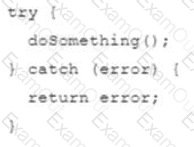
B)
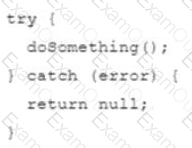
C)
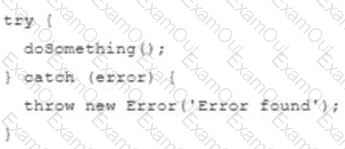
D)
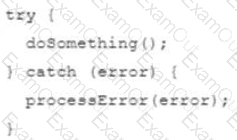
Why would a developerspecify a package.jason as a developed forge instead of a dependency ?
Cloud Kicks has a class to represent items for sale in an online store, as shown below:
Class Item{
constructor (name, price){
this.name = name;
this.price = price;
}
formattedPrice(){
return ‘s’ + String(this.price);}}
A new business requirement comes in that requests a ClothingItem class that should have all of
the properties and methods of the Item class but will also have properties that are specific to
clothes.
Which line of code properly declares the clothingItem class such that it inherits from
Item?
Referto the following code:
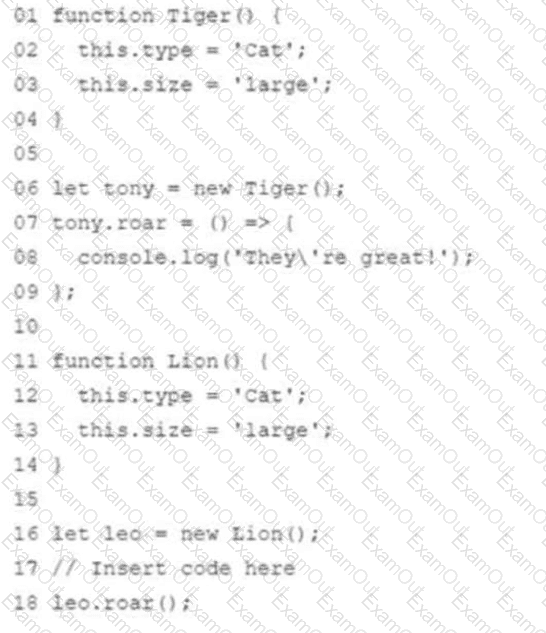
Which two statement could be inserted at line 17 to enable the function call on line 18?
Choose 2 answers
Which statement can a developer apply to increment the browser's navigation history without a page refresh?
Which statement can a developer apply to increment the browser's navigation history without a page refresh?
A developer wants to iterate through an array of objects and count the objects and count
the objects whose property value, name, starts with the letterN.
Const arrObj = [{“name” : “Zach”} , {“name” : “Kate”},{“name” : “Alise”},{“name” : “Bob”},{“name” :
“Natham”},{“name” : “nathaniel”}
Refer to the code snippet below:
01 arrObj.reduce(( acc, curr) => {
02 //missing line 02
02 //missing line 03
04 ). 0);
Which missing lines 02 and 03 return the correct count?
A developer writes the code below to return a message to a user attempting to register a new username. If the username is available, a variable named nag is declared and assigned a value on line 03.
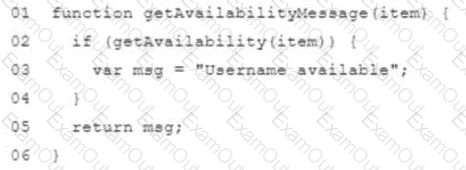
What is the value of msg when getAvailableabilityMessage (“newUserName”) is executed and get Availability (“newUserName”) returns true?
Teams at Universal Containers (UC) work on multiple JavaScript projects at the same time.
UC is thinking about reusability and how each team can benefit from the work of others.
Going open-source or public is not an option at this time.
Which option is available to UC with npm?
Refer to the following code block:
class Animal{
constructor(name){
this.name = name;
}
makeSound(){
console.log(`${this.name} ismaking a sound.`)
}
}
class Dog extends Animal{
constructor(name){
super(name)
this.name = name;
}
makeSound(){
console.log(`${this.name} is barking.`)
}
}
let myDog = new Dog('Puppy');
myDog.makeSound();
What is the console output?
Refer to the code below:
Function changeValue(obj) {
Obj.value = obj.value/2;
}
Const objA = (value: 10);
Const objB = objA;
changeValue(objB);
Const result = objA.value;
What is the value of result after the code executes?

